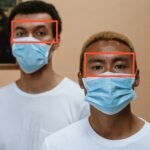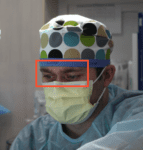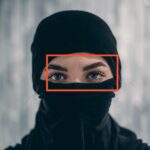An update to Rank One’s flagship product, the ROC SDK, is now available!
The ROC SDK v1.22 delivers major face recognition accuracy and efficiency improvements, as well as a wide range of other improvements and features:
- The ROC FR algorithm has a 50% reduction in error rates across all use cases and a 50% faster enrollment speed
- A newly added next-generation periocular recognition algorithm
- The ROC FR Fast algorithm has a 15% to 40% reduction in error rates and 10% faster enrollment speed
- A newly added next-generation tattoo recognition algorithm
- Database and media management APIs are now included within the ROC SDK, offering major improvements to how users can store and retrieve media files (e.g., facial images)
- Accuracy improvements to the face detection algorithm, particularly for low contrast images
- Speed improvements to the face detection algorithm for planar rotation (i.e., roll) and images with a single face present
- Template comparison speed improvements for ARM processors
- ROC Liveness is now supported in the ROC embedded libraries
- A wide range of other API enhancements and improvements
The accuracies of our improved suite of algorithms are as follows:

The efficiency specifications of the algorithms are as follows:

The improvement between the already stellar ROC SDK v1.20 and the new v1.22 is substantial, as highlighted further in the below text.
Unfortunately submissions to NIST FRVT are currently suspended, so the ROC FR algorithm has not yet been submitted to FRVT. Rank One will submit v1.22 once submissions are allowed. It is clear from these performance metrics that when ROC SDK v1.22 is benchmarked by FRVT, it will continue the precedent of top-tier accuracy and industry-leading efficiency.
ROC FR improvements
The new ROC FR algorithm is perhaps the largest improvement delivered in a release to date, as shown in the following error rate reductions:

This reduction in error rates of roughly 50% across the board is quite a feat given that the previous v1.20 ROC FR algorithm also achieved one of the largest improvements to date and was an FRVT standout.
Perhaps more impressive than this is that the v1.22 ROC FR algorithm is significantly faster than v1.20:

As demonstrated by the efficiency comparisons above, a staggering enrollment speed improvement has been achieved, with v1.22 being 47% faster than v1.20 on servers and 70% faster on mobile devices. Considering that v1.20 was already one of the fastest algorithms in FRVT benchmarks, as well as the accuracy improvements of v1.22, the total improvement delivered by v1.22 is nothing short of remarkable. And, fortunately for ROC partners, these improvements are covered under Rank One’s evergreen licensing policy.
ROC FR Fast improvements
The ROC FR algorithm is known for its industry-leading efficiency relative to other FRVT algorithm submissions. However, for many mobile and embedded device applications the efficiency requirements are beyond even the technical specifications of the ROC FR algorithm. For this reason Rank One released the ROC FR Fast algorithm about two years ago, which delivers the extreme efficiency requirements needed for embedded device applications.
The ROC SDK v1.22 delivers a major round of enhancements to the FR Fast algorithm:


ROC Periocular
Perhaps the most exciting aspect of the ROC SDK v1.22 is the newly included periocular recognition algorithm, which identifies persons using only the eye and eyebrow regions of the face. This new feature was discussed in detail in our recent blog post, and is truly a game-changing capability that is being delivered to Rank One’s partners and end-users.
The ROC Periocular algorithm was released in direct response to the COVID-19 pandemic, and the resultant increase in facial masks. While Rank One’s face recognition technology works well in the presence of masks, there is no ignoring the fact that the best case for any face recognition algorithm in the presence of masks is that it generalizes to a periocular recognition algorithm. This is because only the periocular region of the face is visible when medical masks are worn.
Rank One’s ability to deliver a periocular recognition algorithm in a timeline dictated by a global crisis, while still delivering sweeping enhancements to the rest of the ROC SDK’s algorithms, demonstrates the nimbleness of the employee-owned team founded by engineers. And, Rank One will continue to work with its partners to deliver further COVID-19 related enhancements, including the pending facial mask detection algorithm that will be delivered in a couple of weeks.
ROC Tattoo
Some of the most difficult and heinous crimes have little information leverage. It may be the case that a murder victim has been maimed so severely that only tattoos remain as identifiable features, or that armed robbery suspect only had a tattoo visible. In these circumstances, forensic investigators often need to comb through millions of tattoo booking images as the only chance to find a positive identification.
While the legacy mechanism for searching tattoo databases was to use keywords and categories assigned to the tattoos when originally entered into the database, about 10 years ago the first generation of automated tattoo recognition algorithms were released that used SIFT-based techniques, such as the method published by Jain, et al.
The first generation tattoo recognition algorithms, which are still in use as the best-available solutions today, have upper bound limits on accuracy due to the techniques used, and often take long periods of time to perform searches due to inherent efficiency limitations.
The newly released ROC Tattoo algorithm applies next-generation techniques to this long-standing problem. Through the coupling of deep convolutional neural networks with ROC’s hallmark software efficiency, users of this algorithm will be able to receive lightning-fast search results while upgrading accuracy over legacy techniques. This algorithm is also under continuous development, so Rank One partners and users can expect to easily leverage future improvements after integrating the current version.
API Enhancements
A wide range of API enhancements have been added to the ROC SDK. These enhancements are consistent with the steady addition of features that have become common with the ROC SDK’s widely renowned API.
Perhaps the most exciting API feature delivered with the ROC SDK v1.22 is the inclusion of a new media management database infrastructure that allows integrators to easily store and reference facial (or tattoo) images used to generate recognition templates. In turn, tasks such as database re-enrollment, which are required to use new algorithm versions, can be performed with significant ease. Further, the ROC SDK now has far more flexibility in how it can be integrated with third-party systems and databases.
As always, the change-log in the ROC SDK should be referenced for a detailed overview of any API changes and enhancements. And, if you are a software engineer who works with the ROC SDK, please sign up for our new Developer mailing list to stay up to date with incremental patches and developer notes.
Contact Us
The ROC SDK v1.22 provides a ground-breaking new algorithm that delivers a combination of face recognition accuracy and efficiency unmatched by any vendor. It further delivers next-generation algorithmic capabilities for periocular and tattoo recognition.
To begin your evaluation or to receive a technology demonstration, please contact our team today!
Like this article? Subscribe to our blog or follow us on LinkedIn or Twitter to stay up to date on future articles.
Popular articles:



